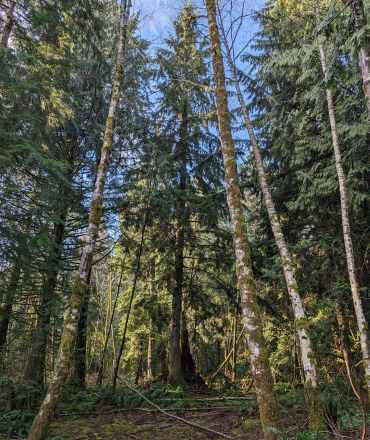Partnership agreements are a common way to purchase high value property. This is where several people come together to buy the property. Although a land-owning partnership can be similar to farm land that you lease with your friends, owning the land has many benefits. You and your group control the access to the land and the activities it will be used for.
You also get financial benefits. The group gets any cash income from the land, whether it is through leasing it, timber harvesting, agriculture, or government CRP programs. Selling a piece of land usually yields a profit when the time comes for you to sell the land you own. Quite often it’s better to invest the money you paid for a land lease in something that will provide immediate solution to your tiny house situation as well as long-term financial gains.
Let’s suppose you have a dream to park your tiny house in Iowa. There are three options: join an RV park or lease land. Or, you can buy a piece of land. This scenario assumes that 2023 is the year in which there is 218 acres of farm land for sale at $2,554.58/acre. The per-acre cost was lower than the Iowa average, but we will use a 6 percent rate to calculate the numbers. This is higher than what we are currently seeing.
Do you want to buy or rent?
We’ll add a few numbers to help us compare the costs of owning and leasing over a period of ten year to get the answer. Let’s say you’re a partner with three tiny house owners. We’ll assume that the cost per acre to lease land is $25, which increases by 10% every three years. If you decide to purchase property, your group will put 20% down and lock in a 30-year loan at a 6 percent interest rate. The property has been in CRP enrollment for ten years. You then rented 20 acres of land to a farmer for $229/acre. We know that taxes are $400/year.
Is it cheaper to lease land than to buy it?
Even though monthly leasing payments are lower in long term the ownership alternative is a better otion. That’s where your money goes after it leaves your bank account. You will spend around $15,000 over the life of a ten-year lease on a land property. This money will not be seen again. However, when you finance tiny house property for your own use, the majority of that money (other than the interest rate to finance it) goes towards building equity on the land. It is an investment. Real estate prices can appreciate significantly over the long-term.
How to prepare for a group purchase of land
Many times, initial investors are unable to purchase tiny house property without a partner. Land ownership can be made affordable by combining assets and splitting the costs. You can also share equipment, food plot supplies, and work. But humans don’t always share well. No matter how unlikely they seem, you must be prepared for disagreements.
It is important to choose the right partner and create a plan that will guide you as a group. Owners must share the same vision of the land. It is important to reach an agreement on matters such as guest hunters, payments, and what to do if someone dies or falls behind. Before any purchase is made, do this. These agreements should be written by a real estate attorney.
In partnerships in which individuals have equal shares of the land, new issues may arise that aren’t in the legal agreements. Decisions are usually made on the basis of voting.
There are many legal ways to establish tiny house land partnerships. Most common options are to put multiple names on the title or to form an LLC.






